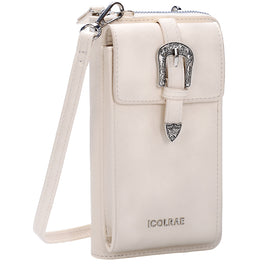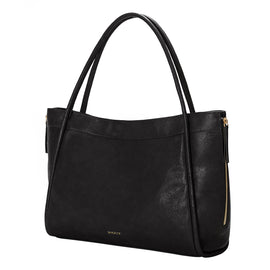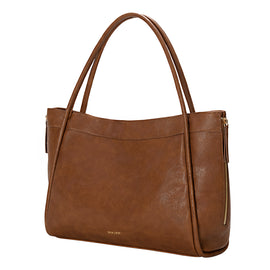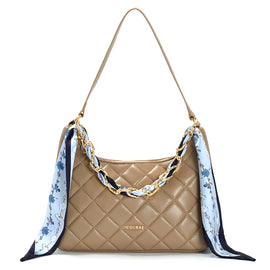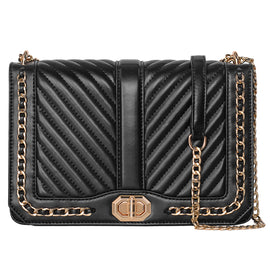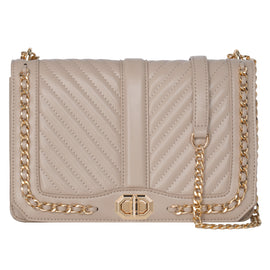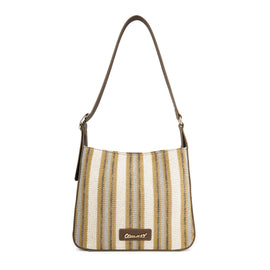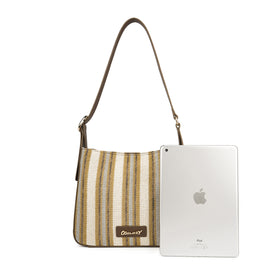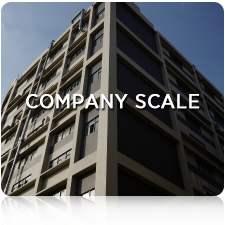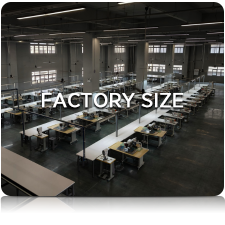How Can Companies Customize Their Own Brand Lunch Bags?
In today’s corporate and retail environment, custom lunch bags are more than just functional containers—they're a marketing tool, a lifestyle statement, and an extension of brand identity. Whether you're a food delivery startup, a wellness-focused company, or a school supply brand, choosing the right material and customization features for your lunch bags can have a direct impact on user experience and product performance.
In this blog post, we'll explore the most common materials used in lunch bag manufacturing, how companies can choose the best material based on functionality, and what customization options are worth considering for specific use scenarios. We'll also share how HerminFashion, a trusted bulk bag manufacturer, helps brands bring these ideas into scalable reality.
1. Common Materials Used in Lunch Bags
The effectiveness of a lunch bag depends heavily on the material it's made from. Different fabrics and linings offer various levels of insulation, durability, weight, and ease of cleaning. Below are the most commonly used materials in custom lunch bag production:
a. Polyester
-
Features: Lightweight, durable, water-resistant.
-
Best for: Everyday use, promotional giveaways, school lunch bags.
-
Why choose it: Affordable and easy to print on for branding.
b. Nylon
-
Features: Stronger than polyester, resistant to tearing and moisture.
-
Best for: Heavy-duty lunch bags or outdoor environments.
-
Why choose it: Ideal for brands promoting active or travel lifestyles.
c. Neoprene
-
Features: Stretchable, insulating, shock-absorbing.
-
Best for: Stylish, reusable lunch bags for tech-savvy or health-conscious audiences.
-
Why choose it: Provides natural insulation without the bulk.
d. PEVA / EVA
-
Features: Non-toxic, waterproof, environmentally safer alternative to PVC.
-
Best for: Lining interiors for leak prevention.
-
Why choose it: Appeals to eco-conscious consumers and food-related businesses.
e. Aluminum Foil + Foam Composite
-
Features: High thermal insulation.
-
Best for: Keeping food warm or cold for extended hours.
-
Why choose it: Often used in delivery bags or medical food supply carriers.
2. How to Choose the Right Material Based on Functionality
Choosing the ideal material is not just about budget—it’s about aligning product performance with user expectations. Here are a few function-driven questions to guide material selection:
Is thermal insulation a priority?
Choose aluminum foil + foam or neoprene. These offer the best temperature retention for both hot and cold items.
Is the bag meant for frequent outdoor use?
Go for nylon or waterproof polyester, which resist moisture, wear, and tearing.
Is the target market eco-conscious?
Consider PEVA linings or recycled polyester options to lower the carbon footprint.
Does the design need structure or flexibility?
For soft-shell bags, neoprene is ideal. If the brand wants structure, polyester with internal foam padding is preferred.
3. Key Customization Options Based on Use Case
Once the material is selected, it’s time to tailor the design to match branding goals and user functionality. Below are some commonly requested custom features and how they align with business types:
| Feature | Ideal for | Benefits |
|---|---|---|
| Zippered Compartments | Food delivery services, corporate giveaways | Secure storage and organized interiors |
| Mesh Side Pockets | Fitness & wellness brands | Easy access to water bottles or utensils |
| Thermal Linings | School lunch bags, café merchandise | Keeps food at desired temperature |
| Adjustable Straps | Outdoor gear companies, family-oriented brands | Versatile carrying methods |
| Custom Logo Printing | All industries | Enhances brand visibility and recall |
| Sustainable Material Tags | Eco-friendly businesses | Promotes environmental responsibility |
By selecting these options based on target demographics and real-life usage, companies can ensure that their lunch bags are not only practical but also aligned with their branding and marketing strategies.
4. How HerminFashion Helps Brands Build Market-Ready Custom Lunch Bags
At HerminFashion, we don’t believe in one-size-fits-all solutions. With years of experience in manufacturing custom bags for international B2B clients, we help brands:
-
Select optimal materials that meet both performance and brand goals.
-
Refine initial design ideas into production-ready prototypes.
-
Integrate advanced customization features without sacrificing scalability.
-
Ensure the manufacturing process is sustainable, efficient, and consistent.
Our dedicated design and sampling teams work closely with clients to recommend practical materials and smart modifications—ensuring that the final product performs well under real-world use. From your concept to mass production, HerminFashion supports every step of your journey.
Conclusion
Custom lunch bags are an excellent opportunity for businesses to reinforce brand identity while offering consumers real utility. But success starts with choosing the right material and features based on purpose—not just aesthetics.
By understanding the pros and cons of different lunch bag materials and applying thoughtful customization strategies, companies can design products that truly resonate with their target audience. And with an experienced partner like HerminFashion, you gain not just a supplier—but a strategic collaborator committed to making your custom bag ideas a commercial success.

